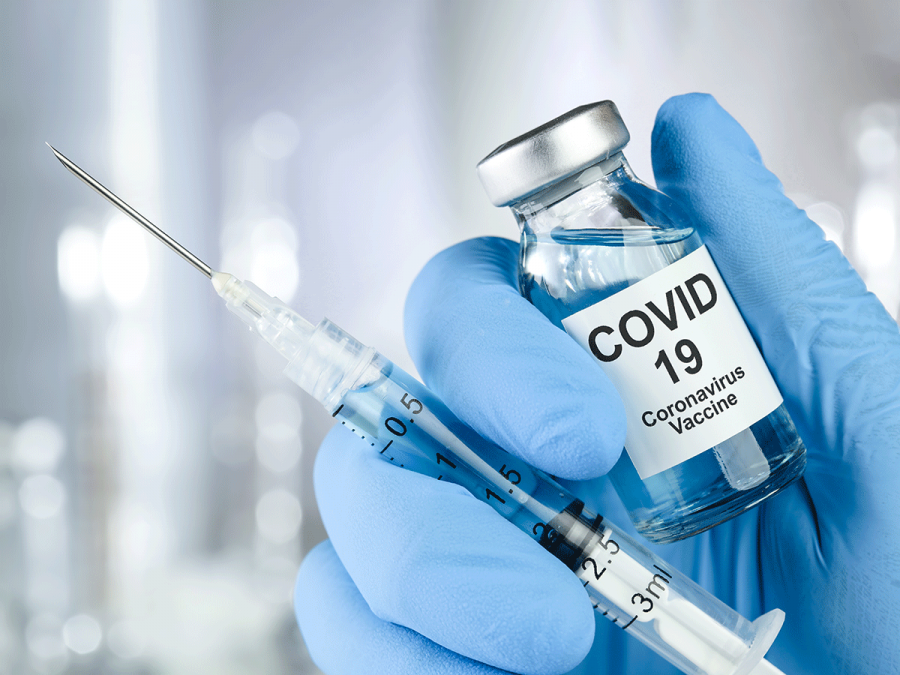The Top Contenders for a COVID-19 Vaccine: Moderna & Pfizer Comparison
Dr. Fauci said on ABC’s Podcast-19 when discussing the importance of safety in creating vaccine so quickly, “…Even though we’re doing this quickly, we’re not compromising the safety and nor are we compromising scientific integrity”
What we’ve been waiting for is almost here: a COVID-19 vaccine that could shut down this pandemic and give rise to normalcy once again. Although the definition of normal has changed significantly, these two vaccines lead the race for the fight against the Coronavirus: Moderna and Pfizer.
According to Business Insider, these vaccines have shown impressive results in preliminary tests, with 94.5% and 90% (now 95% according NPR) effectiveness respectively. Besides the slim difference in effectiveness what sets Moderna’s and Pfizer’s vaccines apart? And what makes them similar and so effective?
The vaccine approval process takes place over three major phases: the safety phase, the expanded phase, and the efficiency phase, according to The New York Times.
The first phase focuses on establishing the safety of the vaccine: the standard dosage, and evidence of an immune response.
The second phase expands the number of people tested and divides them into general age groups (children vs elderly) to determine how the vaccine affects people across ages.
The final phase before approval, is the efficacy phase. These tests include thousands of people to test the efficacy of the vaccine as compared to a placebo, to determine if the vaccine truly defends the user against COVID-19 along with revealing rare side effects.
What is the origin of each vaccine?
While Pfizer’s company is more widely known for its contribution to medicine, Moderna is a small biotech upstart based in Massachusetts. Both companies have produced similar vaccines to respond to the coronavirus pandemic and are currently in the third phase of the vaccine approval process.
The fact that these companies have produced a vaccine within the year is already impressive and its effectiveness proves that these vaccines have a real shot at taking down the villain of 2020.
Dr. Fauci said on ABC’s Podcast-19 when discussing the importance of safety in creating vaccine so quickly, “…Even though we’re doing this quickly, we’re not compromising the safety and nor are we compromising scientific integrity”
How do these vaccines work?
In terms of treatment, both the immunization process and the function of each vaccine are similar. According to Business Insider, since scientists anticipate a slow mutation to the virus, the vaccines wouldn’t need to be updated as often as the flu vaccine, which requires a new vaccine every year in order to keep pace with the virus’ mutations.
The more important question is determining how long immunization lasts with each vaccine and how often would people need to get them.
According to WebMD, both vaccines utilize mRNA, messenger RNA– a messenger that tells DNA to create proteins based on the instructions it gives–to produce antibody proteins targeted at antigens.
More specifically, Moderna’s mRNA-1273 gives instructions to the immune system to copy spike proteins that will build a defense against the virus.
Pfizer’s BNT162b2 targets antigens in order to build antibodies that will protect against the virus.
Both vaccines require the use of refrigeration. Moderna’s vaccine can last for about 30 days in standard refrigerated temperatures, which typically range from 36 degrees Fahrenheit to 46 degrees Fahrenheit.
While Pfizer’s can only last 5 days in the same refrigerator, therefore there will be a heavy reliance on specialized freezers that create temperatures of at least -94 degrees Fahrenheit and the use of an intricate timeline for use.
What is the testing process for each vaccine?
Preliminary analysis of both vaccines included thousands of people either given a placebo or the actual vaccine, in which both vaccines proved that the real thing worked better.
The treatment procedure for both companies requires two shots–with Moderna’s a month apart, and Pfizer’s three weeks apart. This also proved that two shots to be the most effective procedure for treatment as there was a visible increase in the number of antibodies after the second dose, increasing immunity.
Side effects varied slightly, but overall were mild and didn’t propose any significant health concerns; including fever, sleep problems, pain at the injection site, fatigue, and a few different types of aches.
Who has access?
Both companies have already started mass production of their vaccines, according to Business Insider, Moderna has a goal of 20 million vaccines–enough to support 10 million people by the end of 2020; while, according to NPR, Pfizer has a goal of 50 million vaccines, which is enough to treat 25 million people, at year’s end–with even more ambitious goals for both companies the following year.
According to The Wall Street Journal, people at high risk, essential workers such as doctors and nurses are most likely to obtain access to these vaccines first.
What does the path forward look like?
Many questions lie ahead on the path to destroying the Coronavirus, including the length of immunization, long-term treatment, and distribution. Both vaccines require some type of refrigerated container to store them in and that in itself can be a liability with developing and economically struggling countries, according to Business Insider.
China and Russia have vaccines already approved for limited use, according to the New York Times, which hold some level of risk as these vaccines are still being tested in other countries and both were hastily approved by their respective countries in justification of the medical emergency.
There is also the manner of convincing the anti-vaxxers to trust in these vaccines that are tested diligently in clinical trials to prove their efficacy and safety. Without immunization, people will still be vulnerable to the coronavirus (as compared to if everyone took the vaccine) and may even delay the world’s recovery from the pandemic because they don’t trust the vaccine.
Lastly, production and finances also influence the rate of distribution, uncertainty may be a theme of the year but these vaccines provide hope that humanity will overcome the virus and return to the normal we’ve missed for so long.
“We gotta get it right. We really do. Because if we don’t, it might have a real negative impact in the long range, in the long term on how people approach and respond to the need of vaccination,” Dr. Faci said on ABC’s Podcast-19 when discussing the importance of COVID-19 vaccines.



